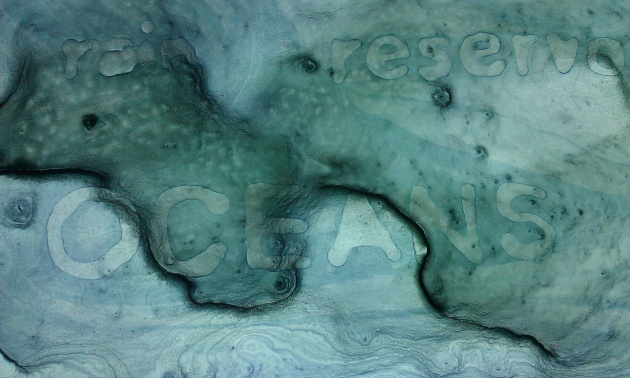Well, the glass sheets that I've been using since college finally got too scratched up to use. How does glass get scratched up? Apparently by stacking the sheets on top of each other with a few stray grains of sand trapped in between. After animating the sand sequences for Barzan last year I discovered all my glass was beat up.
I got brand new sheets from Perkins glass, around the corner from my studio. They even sanded down the edges slightly so I can carry them around without risking cutting myself. And I got them cut to the correct size! Yes, back in 2007 when I had my old sheets made I miscalculated the dimensions and the sheets weren't the full width they should have been. This means they only sat inside half of the wooden struts. Perfectly usable, but it meant I couldn't really shift the glass left or right intentionally without them falling off. Now I have that option, and it feels much sturdier too:
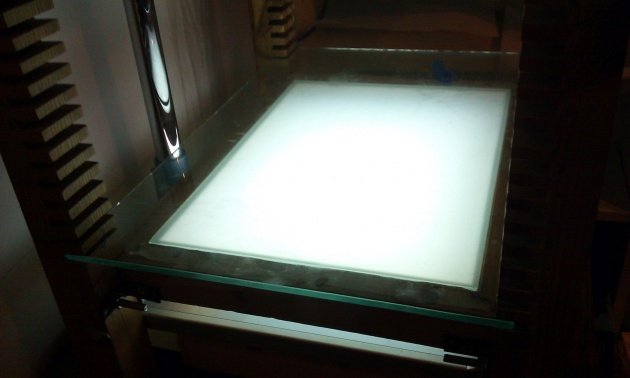
The water film continues to chug along. A couple days ago I broke open the mostly locked audio and edited it down to about 8 minutes from 11 minutes. Quite a feat, really. Here are some more production photos:
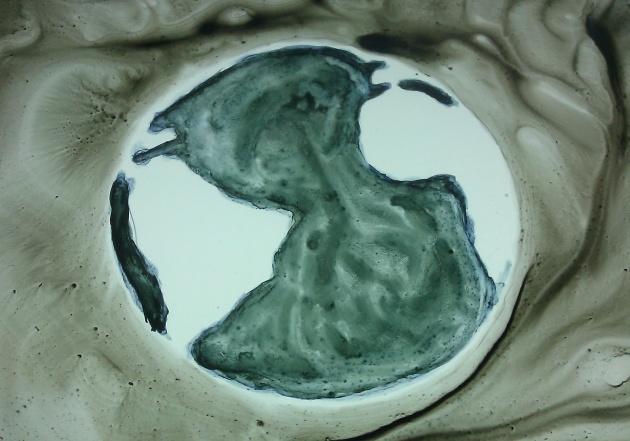
This Earth is from one of the water cycle scenes. Here you see it dried, but in the film the water is animated, moving around the globe. Next up was the title sequence! Here I drew the word in water and added ink slowly to it until the word became visible, and then more until the word became a puddle of ink. But you can see an outline of the original water markings underneath the puddle. I really love this accident. Also, note how it seems my animation stand is still tilted to the left. I added some shims, let's see if that fixed it:
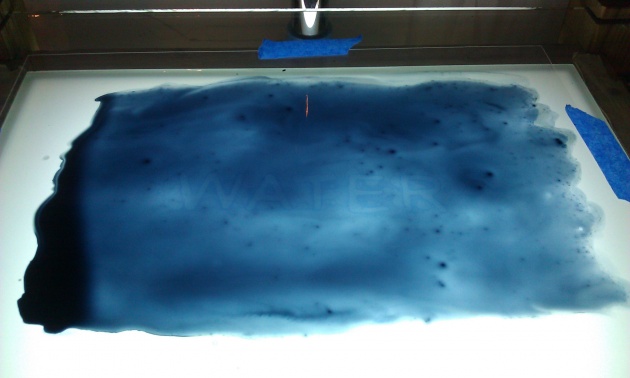
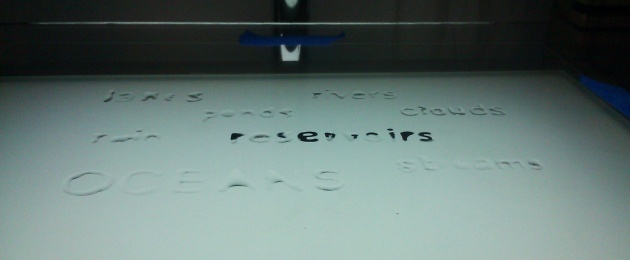
Above is the beginning of another word-related scene. Here you can see the words written in water, and ink is being added to 'reservoirs'. Below is the shot of my stand after the scene is over and the ink has dried. You can still see them underneath all that dried ink:
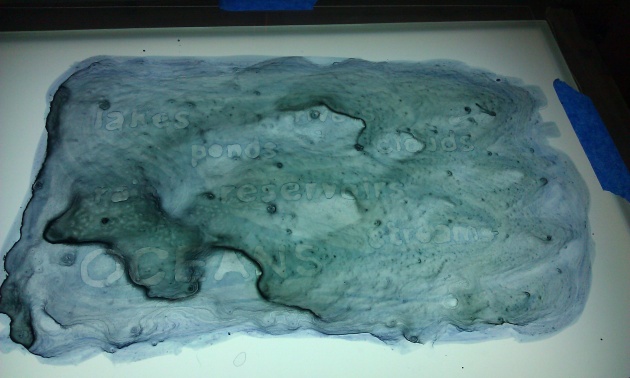
Here is a close up:
